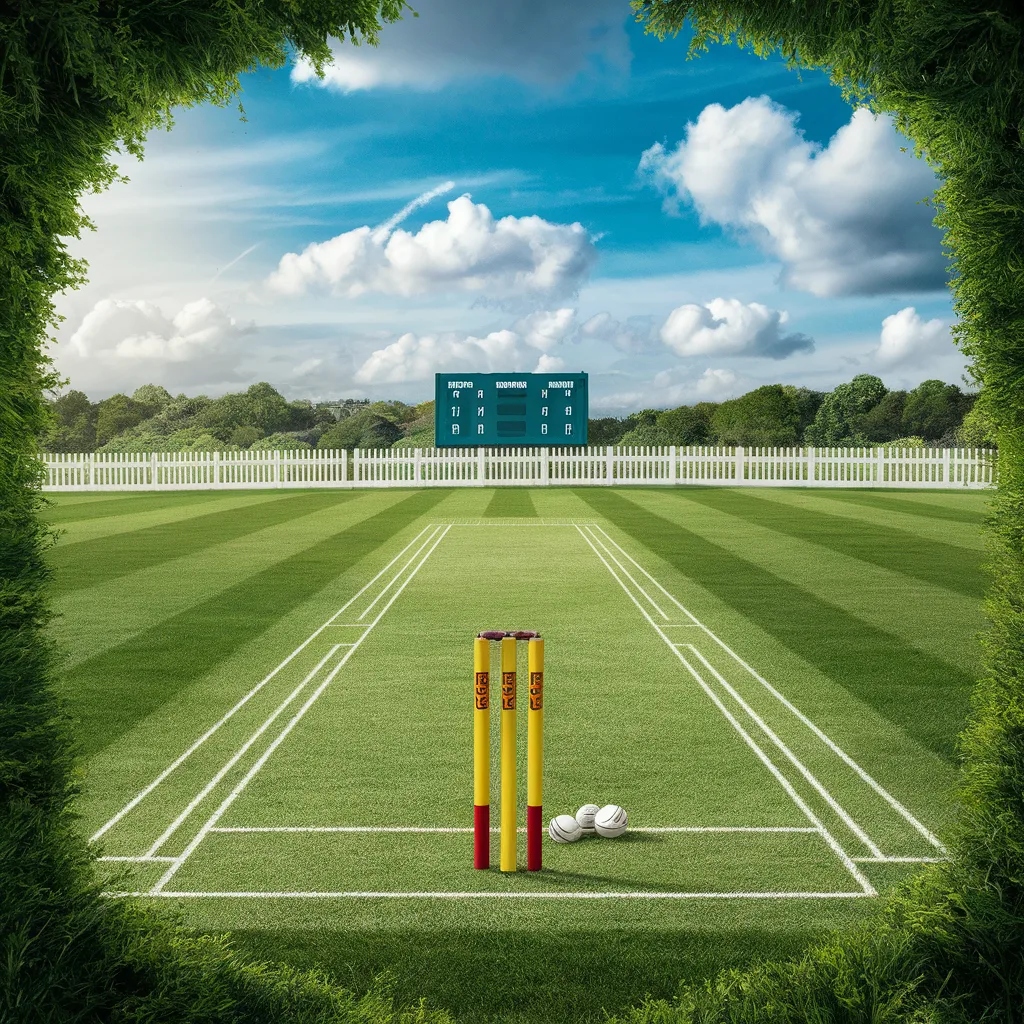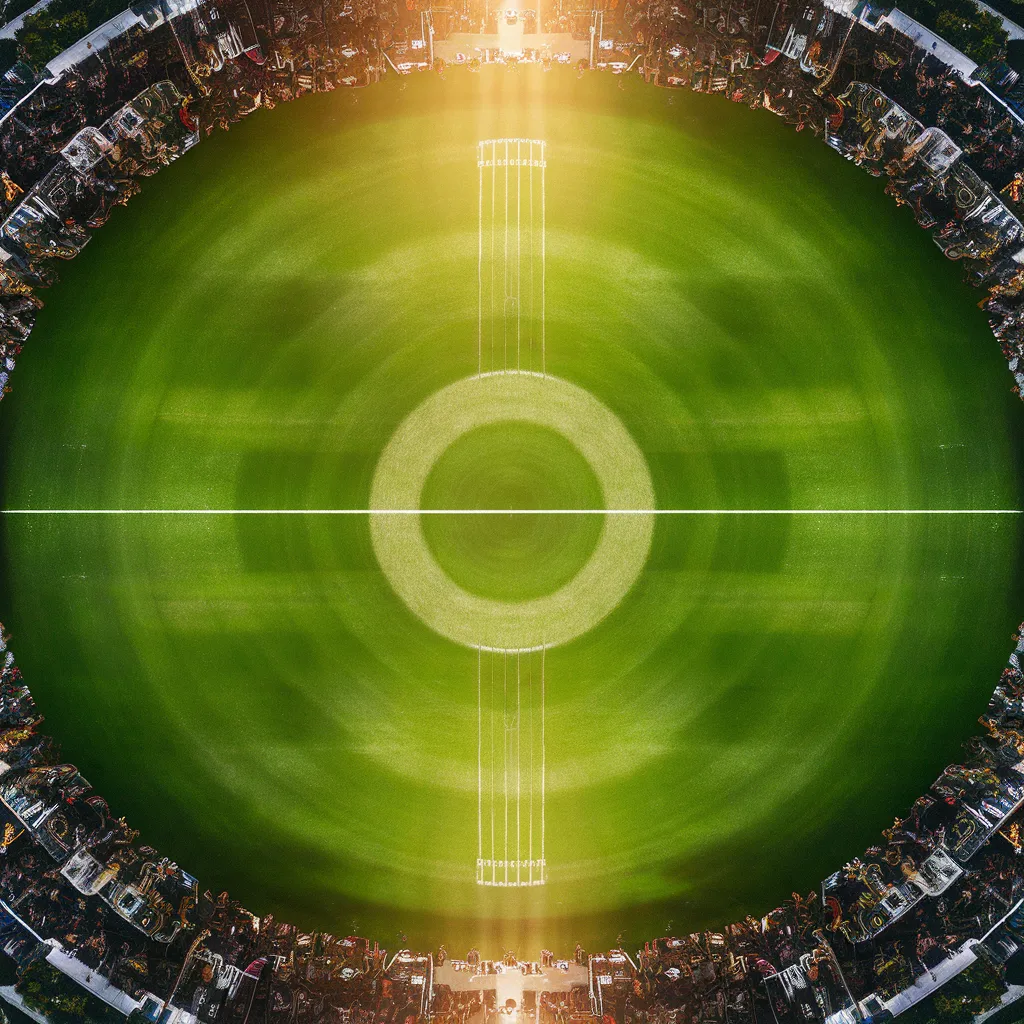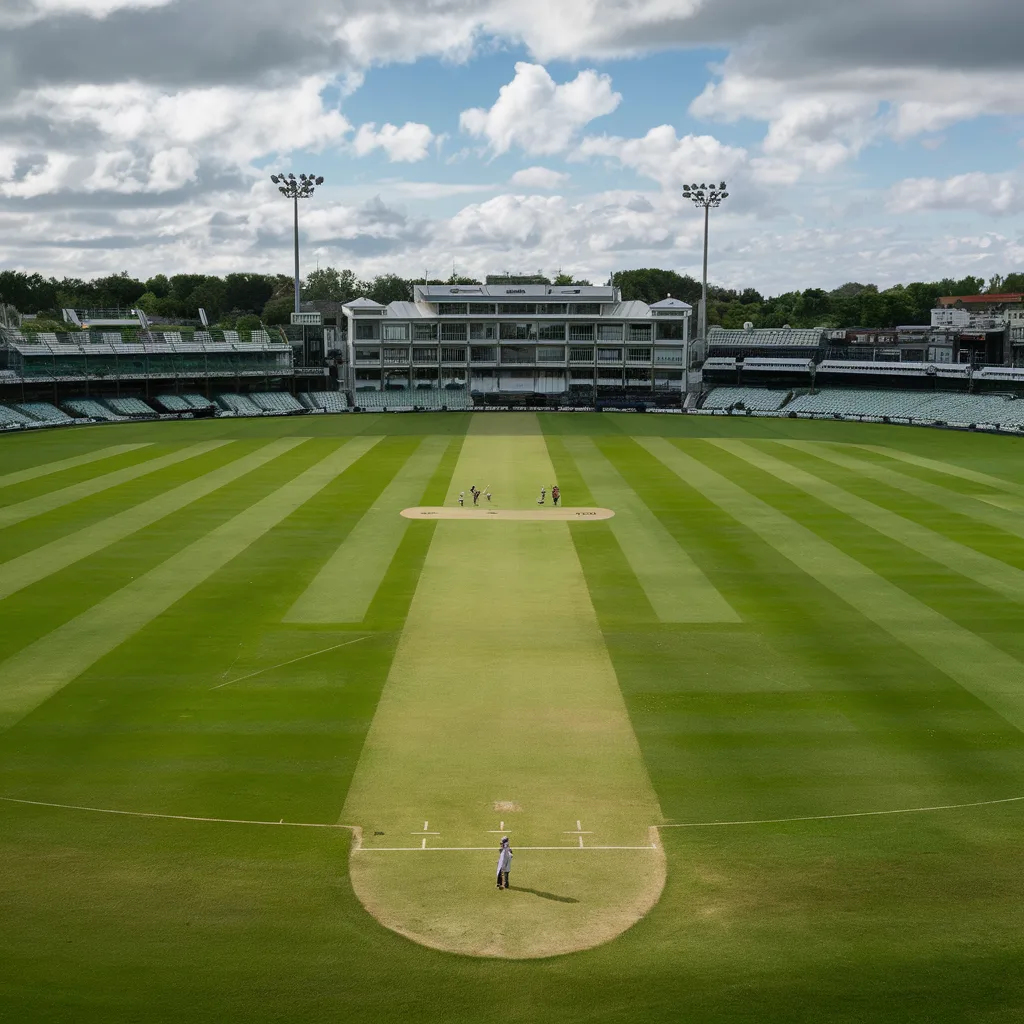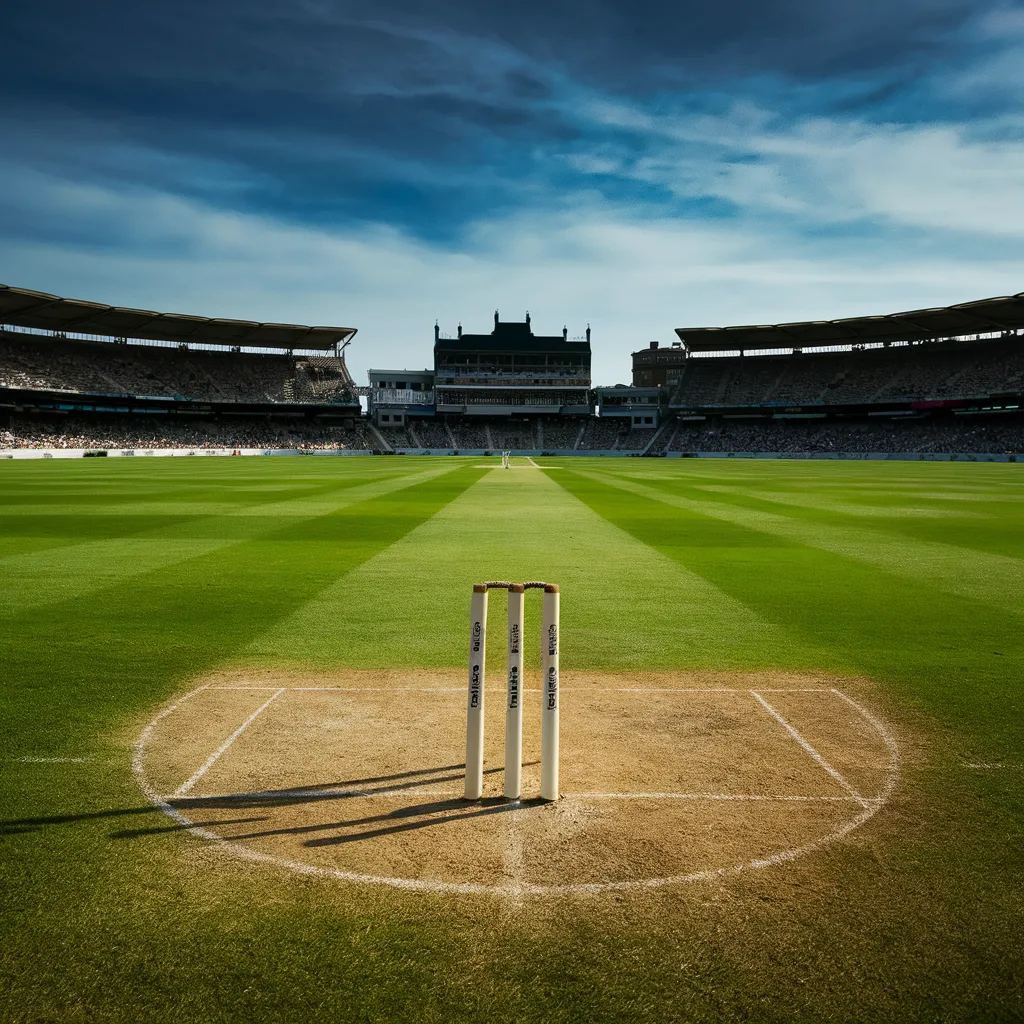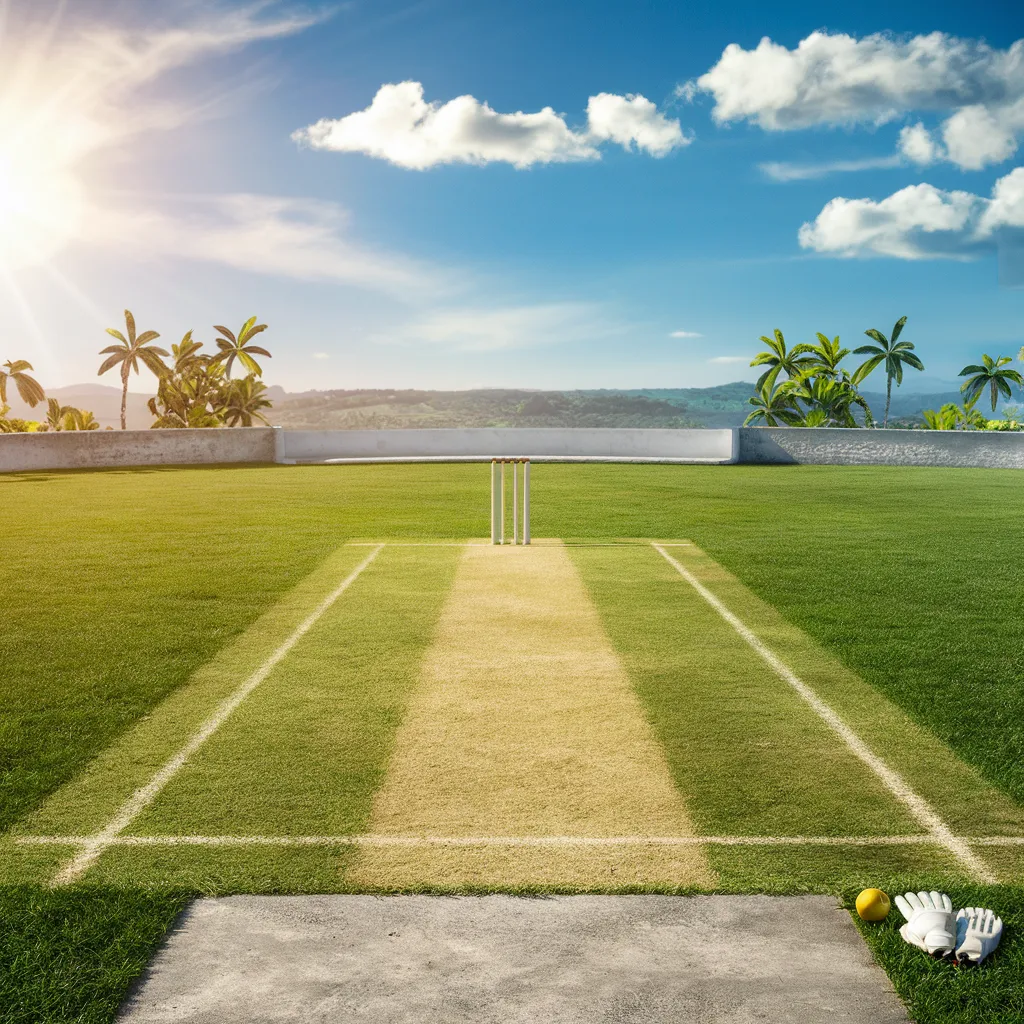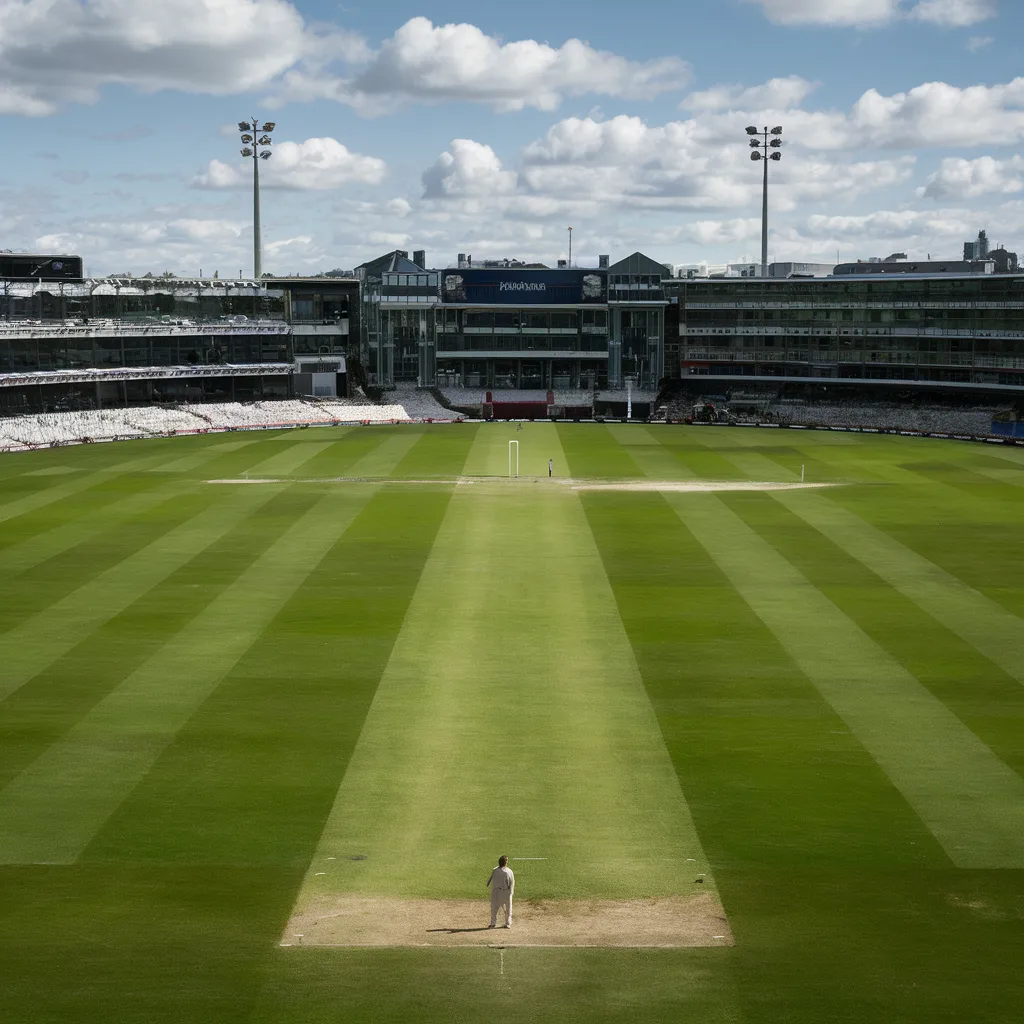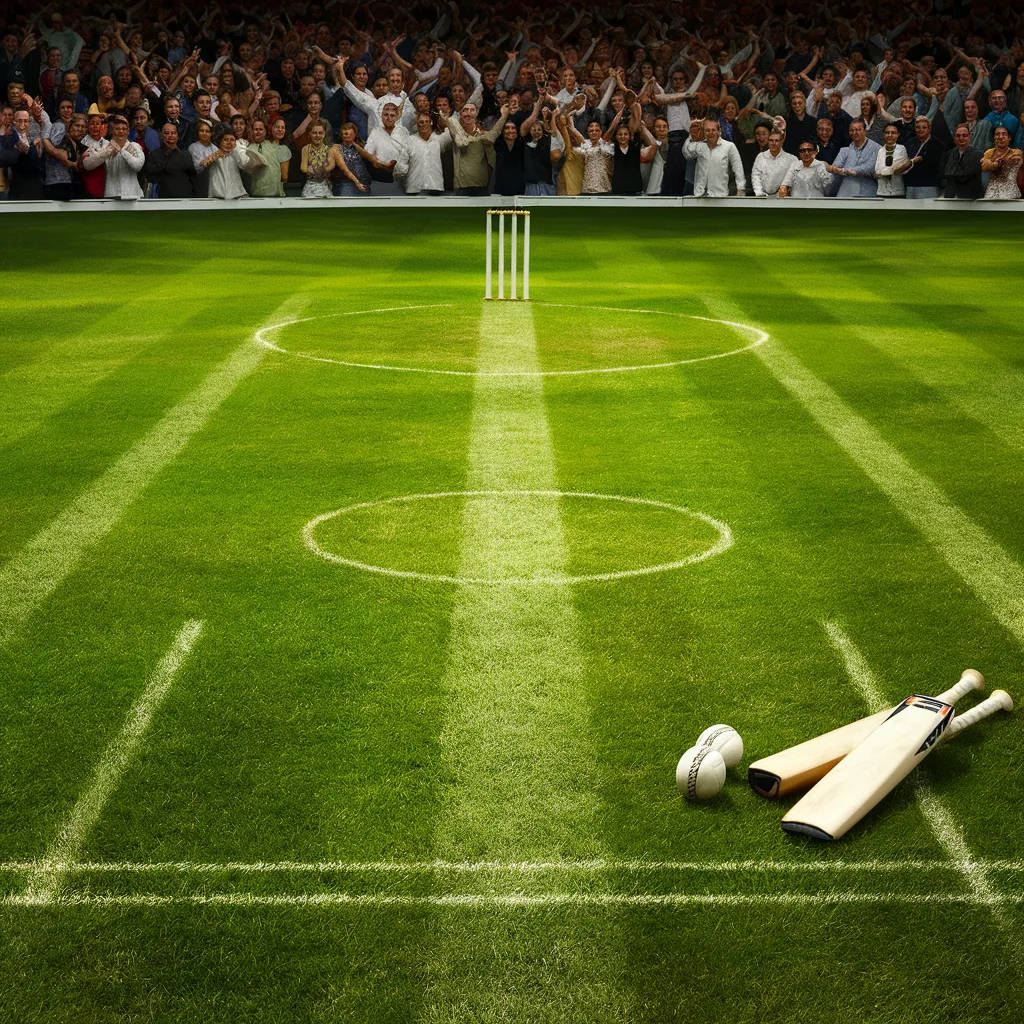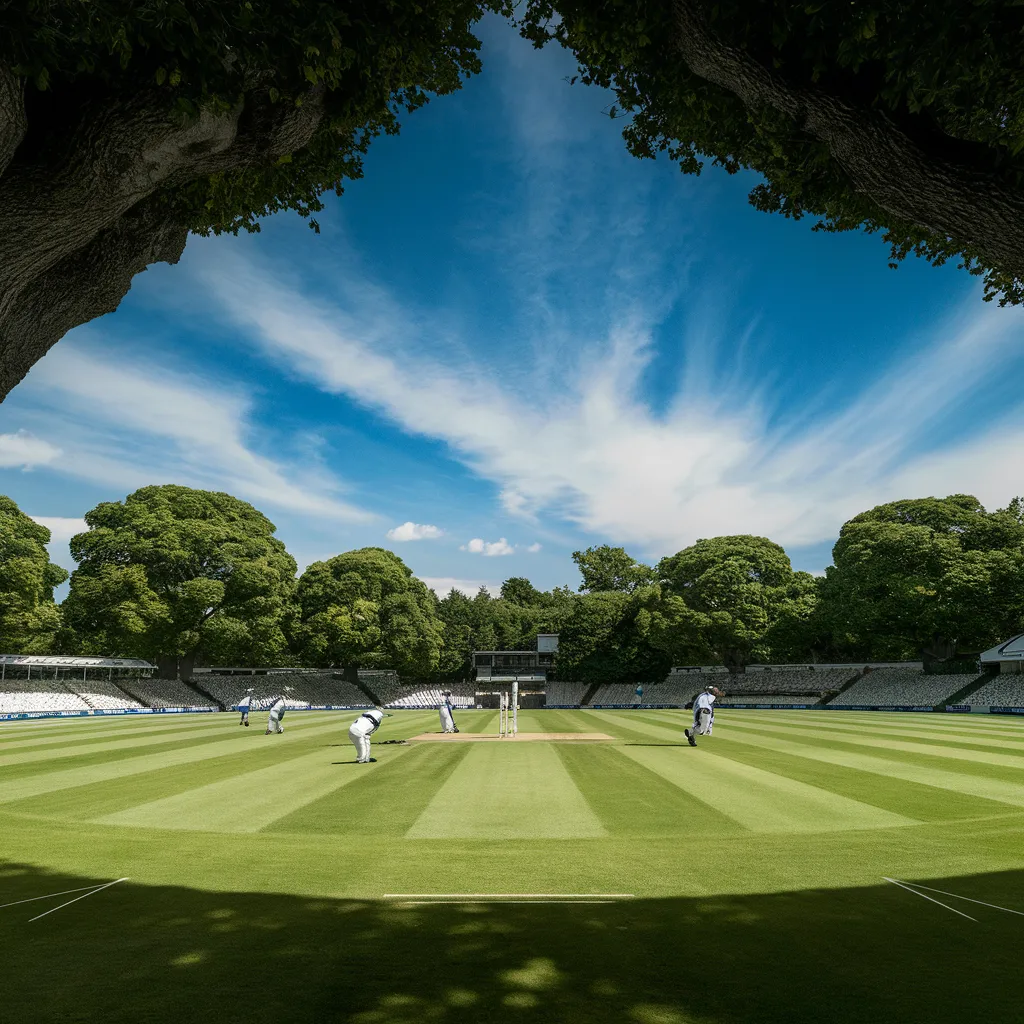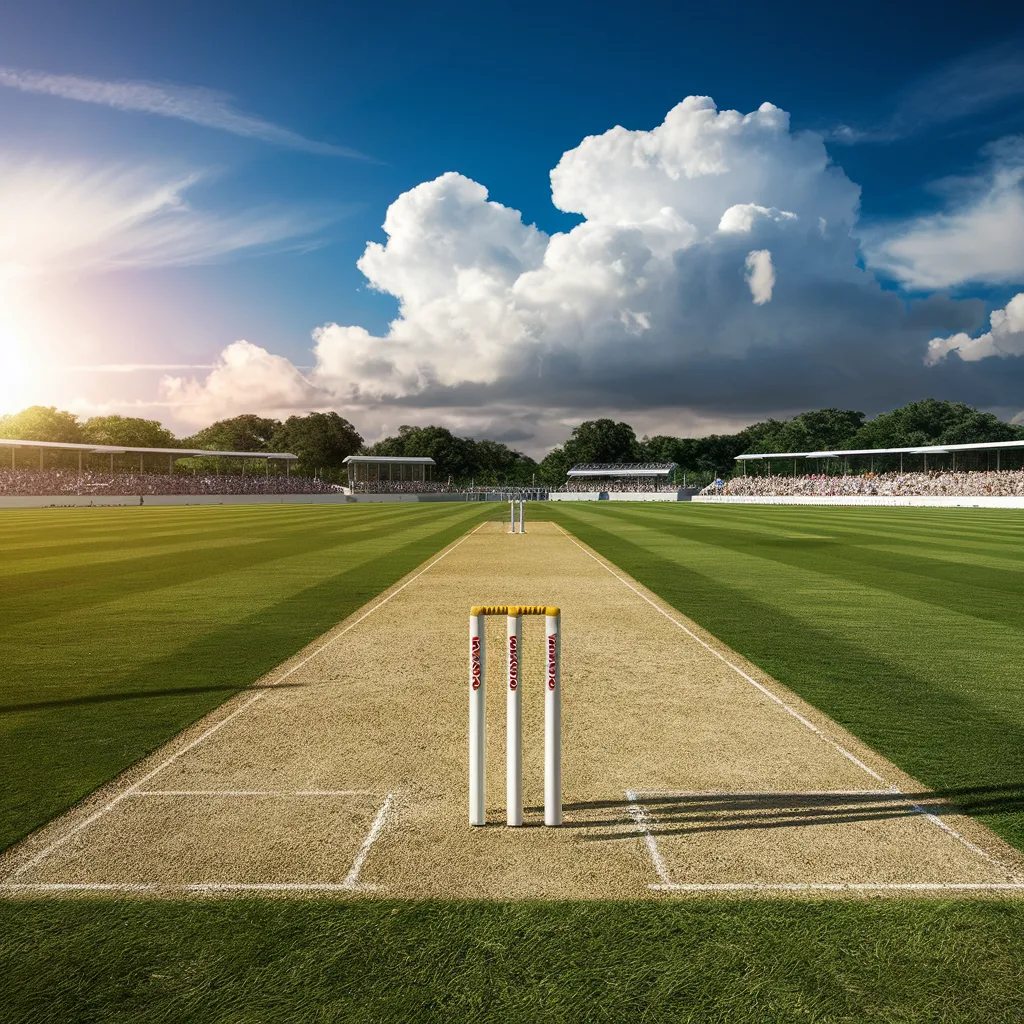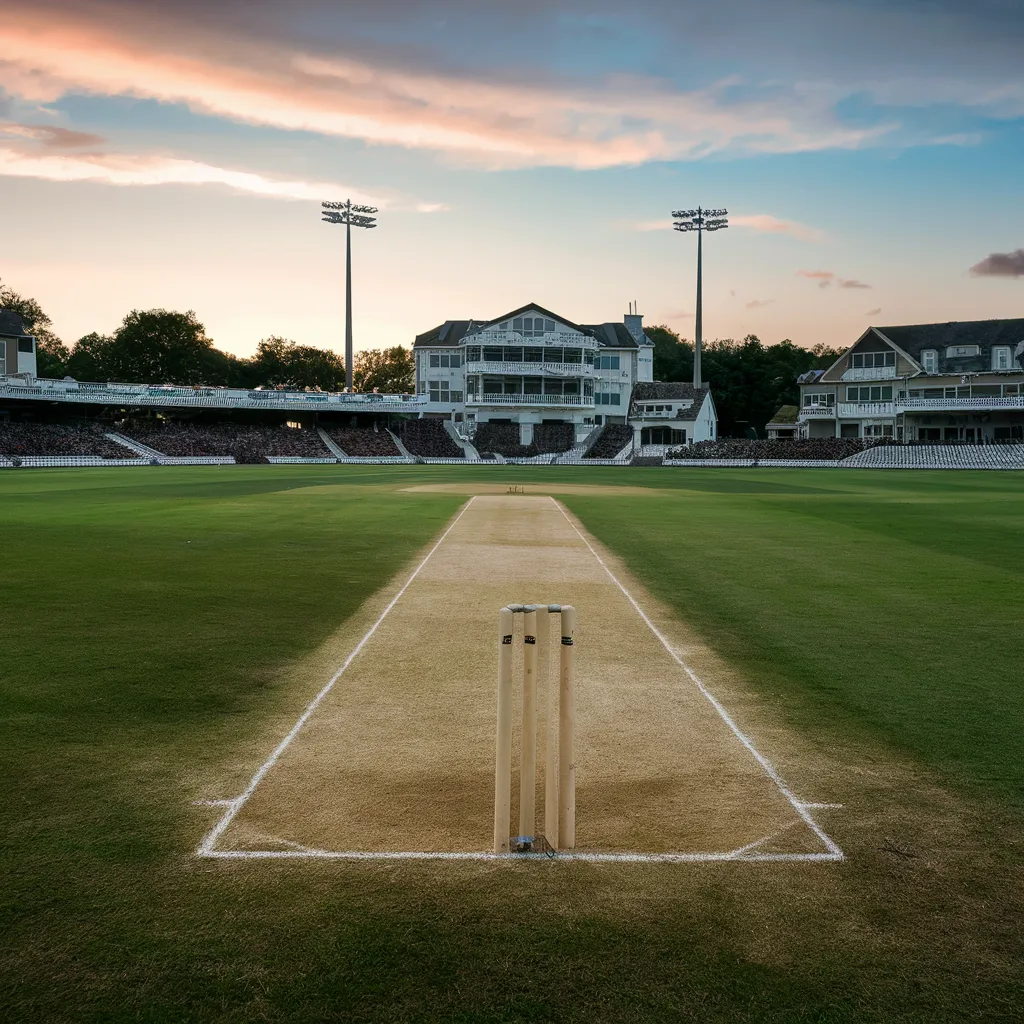The intresting Guide to Understanding Cricket Pitches and their best photos
The Ultimate Guide to Understanding Cricket Pitches

The intriguing game of cricket has millions of followers all around the world. The cricket pitch is a vital component that greatly affects how a match turns out. With insights to improve your appreciation of the game, this guide will help you grasp every aspect of cricket pitches, from their varieties to their preparation and upkeep.
A cricket pitch: what is it?
The rectangular space in the middle of the cricket field, where most of the action takes place, is called a cricket pitch. Its length is 22 yards (20.12 meters), and its width is 10 feet (3.05 meters). The kind and quality of the pitch can have a big effect on the game, changing how the ball plays and how well the players perform.
Importance of the Cricket Pitch in the Game
Because it directly affects batting and bowling conditions, the cricket pitch is crucial. While a missed pitch can significantly favor one over the other and affect the outcome of the game, a well-made pitch can give a fair match between bat and ball.
Types of Cricket Pitches
Hard Pitches
Characteristics: Hard pitches are firm and dry, often found in regions with hot climates. They tend to have a consistent bounce and pace.
Impact on Gameplay: Batsmen enjoy batting on hard pitches as the ball comes onto the bat nicely, making it easier to score runs. Fast bowlers also benefit from the extra bounce, but spinners may find it challenging to extract turn.
Soft Pitches
Characteristics: Soft pitches are typically moist and can be found in regions with high humidity or after rain. They tend to be slower and may have an uneven bounce.
Impact on Gameplay: Batsmen might struggle on soft pitches due to the unpredictable bounce and slower pace. Fast bowlers can exploit the conditions to get movement off the seam, making it difficult for batsmen to score freely.
Dusty Pitches
Characteristics: Dusty pitches are dry and loose, often found in the subcontinent. They tend to break down quickly, leading to variable bounce and turn.
Impact on Gameplay: Dusty pitches are a paradise for spin bowlers as they can extract significant turn. Batsmen need to be skilled at playing spin to succeed on these pitches.
Green Pitches
Characteristics: Green pitches have a significant amount of grass on them, often seen in countries like England and New Zealand. They are usually moist and offer good carry and bounce.
Impact on Gameplay: Fast bowlers thrive on green pitches due to the movement and bounce. Batsmen need to be technically sound to handle the lateral movement of the ball.
Preparation of a Cricket Pitch
Soil Selection
Ideal Soil Types: Clay-rich soils are preferred for cricket pitches due to their ability to bind well and provide a firm surface.
Soil Testing and Treatment: Regular soil testing ensures the right balance of clay, sand, and silt. Treatments may include adding nutrients and ensuring proper drainage.
Pitch Rolling Techniques
Types of Rollers: Heavy rollers are used to compact the pitch, while light rollers help maintain surface smoothness without over-compacting.
Rolling Methods and Their Effects: Consistent rolling helps achieve the desired hardness and smoothness. The timing and duration of rolling can affect the pitch’s characteristics.
Grass Maintenance
Grass Types Used: Bermuda and Rye grasses are commonly used for cricket pitches due to their durability and growth characteristics.
Mowing and Watering Techniques: Regular mowing at the right height ensures a smooth playing surface. Controlled watering helps maintain the pitch’s moisture balance.
Marking the Pitch
Dimensions and Measurements: Accurate marking of the pitch is essential for fair play. The pitch is 22 yards long and 10 feet wide, with creases marked for the batsmen and bowlers.
Tools and Equipment: Chalk, string lines, and measuring tapes are commonly used tools for marking the pitch.
Pitch Conditions and Their Effects on the Game
Dry Pitches
How They Affect Batting and Bowling: Dry pitches favor batsmen due to the consistent bounce but can deteriorate over time, aiding spin bowlers.
Wet Pitches
How They Affect Batting and Bowling: Wet pitches are challenging for batsmen due to the slower pace and unpredictable bounce. Bowlers, especially seamers, benefit from the moisture.
Worn Pitches
Impact on Spin and Seam Bowling: Worn pitches provide significant assistance to spin bowlers due to the rough and uneven surface, while seam bowlers can exploit the variable bounce.
Seasonal Variations in Pitch Conditions
Summer Pitches
Typical Characteristics: In summer, pitches tend to be hard and dry, offering good bounce and pace.
Adaptations by Players: Batsmen can play their shots freely, while bowlers need to focus on variations in pace and line.
Winter Pitches
Typical Characteristics: Winter pitches are usually softer and damper, leading to slower and variable bounce.
Adaptations by Players: Batsmen need to be cautious, and bowlers can exploit the conditions with seam and swing.
Pitch Maintenance During a Match
Daily Maintenance Routines
Brushing and Sweeping: Regular brushing and sweeping remove loose debris and keep the pitch clean.
Watering Practices: Light watering may be done to maintain the pitch’s moisture balance without making it too wet.
Mid-Inning Repairs
Handling Wear and Tear: Repairing footmarks and other damages during breaks ensures the pitch remains playable.
Techniques for Quick Fixes: Using sawdust, sand, or clay to fill in damaged areas helps maintain a consistent playing surface.
Role of Groundsmen
Responsibilities and Skills
Groundsmen are responsible for preparing and maintaining the pitch. They need skills in soil science, grass management, and machinery operation.
Challenges Faced
Weather conditions, time constraints, and resource limitations are common challenges faced by groundsmen.
Innovations in Pitch Maintenance
Technological Advances in Pitch Preparation
Modern technology allows for precise monitoring of pitch conditions, leading to better preparation and maintenance.
Modern Equipment and Tools: Advanced machinery and tools help in achieving the desired pitch conditions more efficiently.
Impact of Technology on Pitch Quality: Improved technology has led to more consistent and higher-quality pitches, enhancing the game.
Famous Cricket Pitches Around the World
The WACA, Perth
Unique Features: Known for its fast and bouncy pitch, making it a favorite for fast bowlers.
Memorable Matches: Many thrilling matches have been played here, with bowlers often dominating.
Lords, London
Unique Features: The “Home of Cricket” with its iconic slope, influencing ball movement.
Memorable Matches: Historic matches and memorable moments in cricket history have taken place at Lords.
Eden Gardens, Kolkata
Unique Features: One of the largest cricket stadiums with a passionate crowd and spin-friendly pitch.
Memorable Matches: Many epic encounters, including India’s famous victories, have occurred at Eden Gardens.
Pitch-Related Controversies
Historical Controversies
Pitch conditions have often led to debates, with accusations of pitches being tailored to favor the home team.
Recent Debates and Issues
Recent issues include the overuse of pitches and the impact of T20 cricket on traditional pitch preparation.
Impact on the Sport
Controversies can affect the spirit of the game and lead to changes in pitch preparation regulations.
Impact of Pitch Conditions on Player Performance
Batsmen
Adapting to Different Pitches: Batsmen need to adjust their techniques and strategies based on the pitch conditions.
Techniques for Success: Skills like playing spin on dusty pitches and handling swing on green pitches are crucial.
Bowlers
Strategies for Different Pitch Types: Bowlers need to adapt their line, length, and pace based on the pitch.
Adapting Bowling Styles: Fast bowlers may focus on bounce on hard pitches, while spinners exploit turn on dusty pitches.
Psychological Aspect of Pitch Conditions
Player Mindset
Mental toughness is essential to handle challenging pitch conditions.
Dealing with Unpredictable Conditions
Players need to stay focused and adaptable to succeed on different pitches.
Team Strategies
Planning Based on Pitch Reports
Teams often plan their line-ups and strategies based on detailed pitch reports.
Conclusion
Summary of Key Points
Understanding the types of pitches and their preparation is crucial for players and teams. Proper maintenance ensures a fair and exciting contest.
The Future of Cricket Pitches
Advances in technology and groundkeeping practices will continue to improve pitch quality and consistency.
Frequently Asked Questions (FAQs)
What is the standard size of a cricket pitch?
The standard size is 22 yards (20.12 meters) long and 10 feet (3.05 meters) wide.
How is a cricket pitch prepared before a match?
Pitch preparation involves soil selection, rolling, grass maintenance, and marking.
Why do pitches behave differently in different countries?
Climate, soil types, and local groundkeeping practices influence pitch behavior.
What are the common issues faced in pitch maintenance?
Weather conditions, resource limitations, and wear and tear are common challenges.
How does weather affect pitch conditions?
Weather can impact the moisture content and hardness of the pitch, affecting play conditions.
if you want to see best image of cricket pitch read more
some best photo of cricket pitch which is intresting to see!

